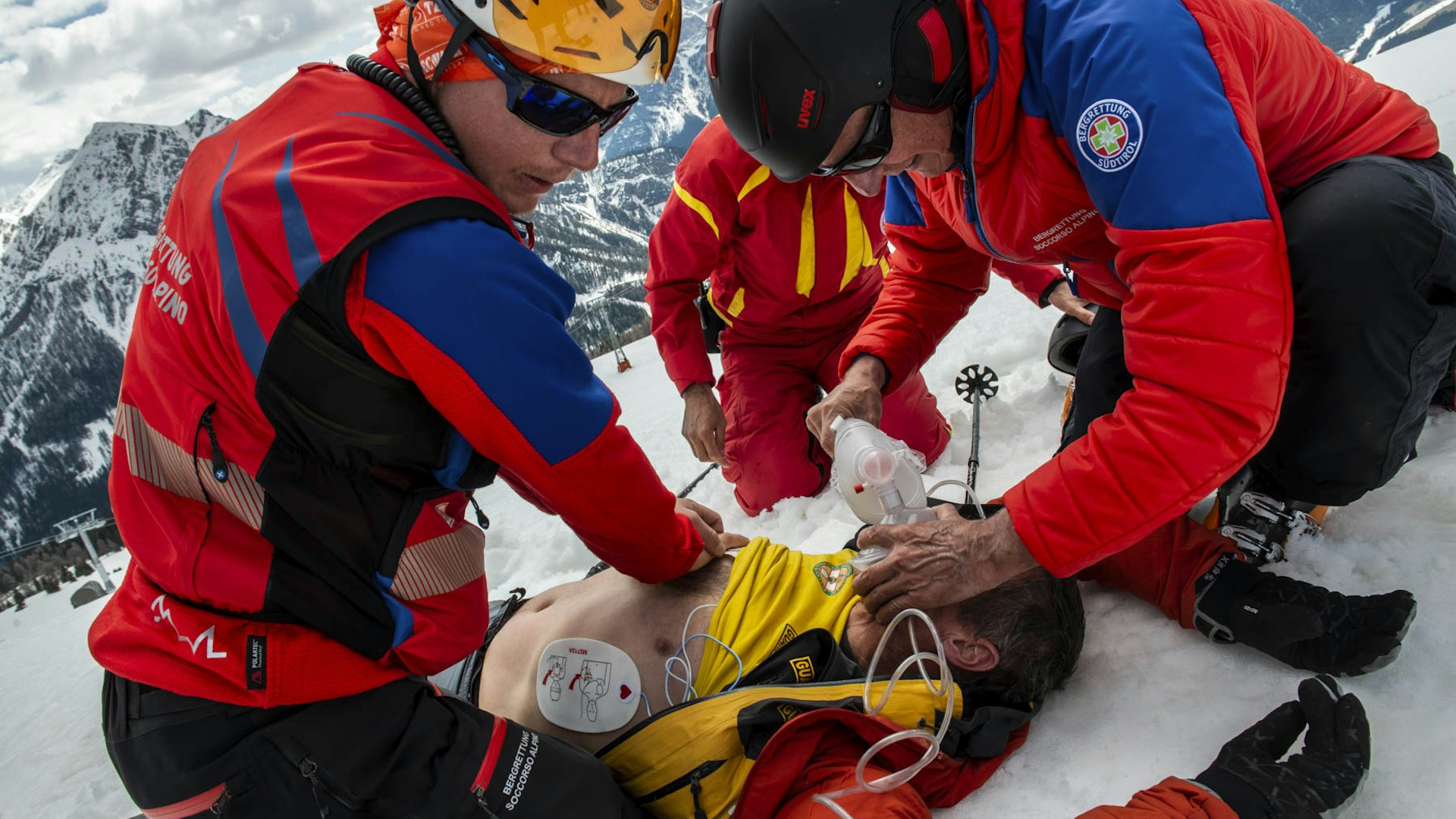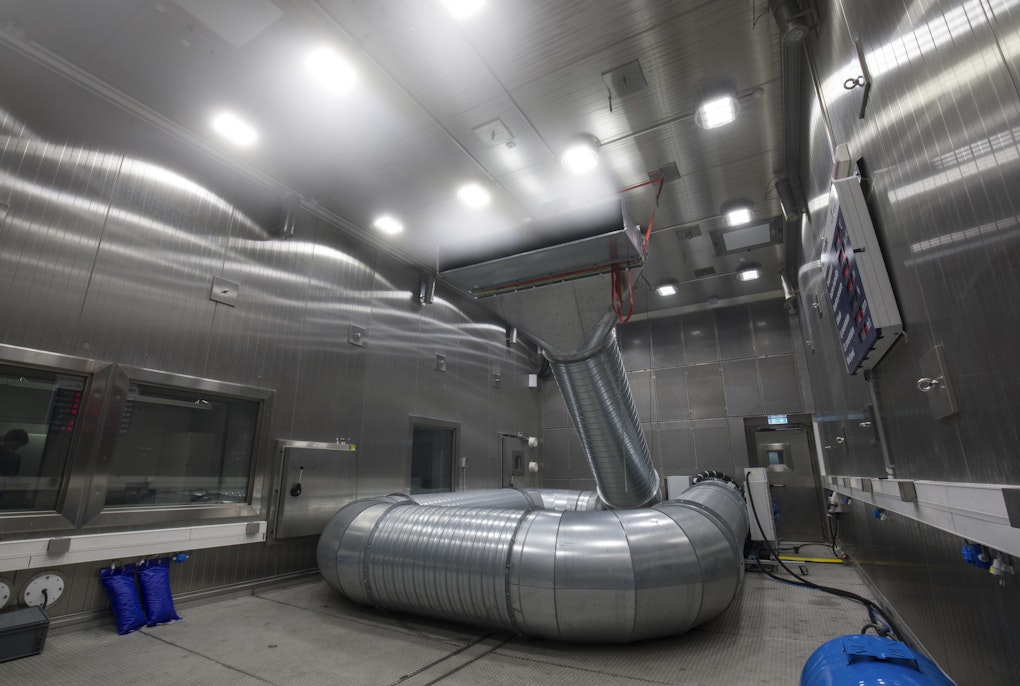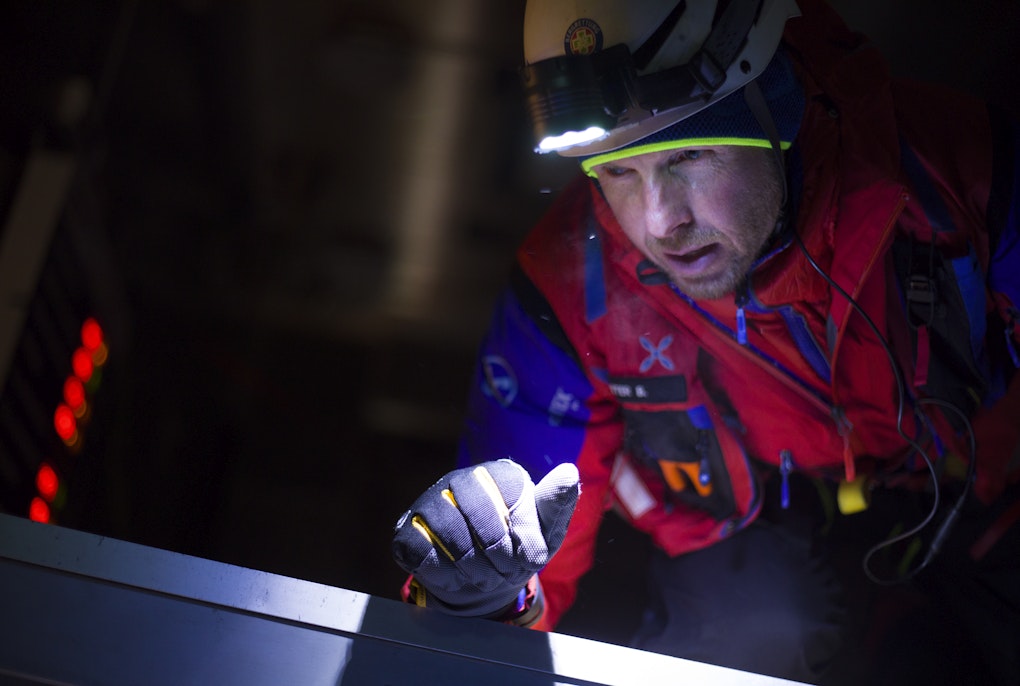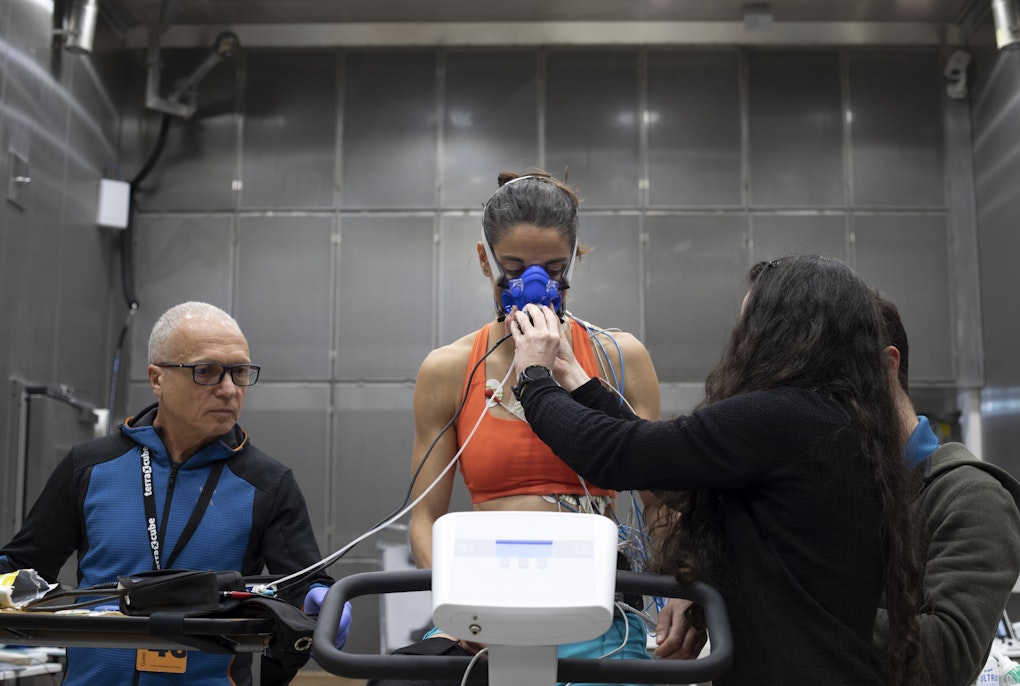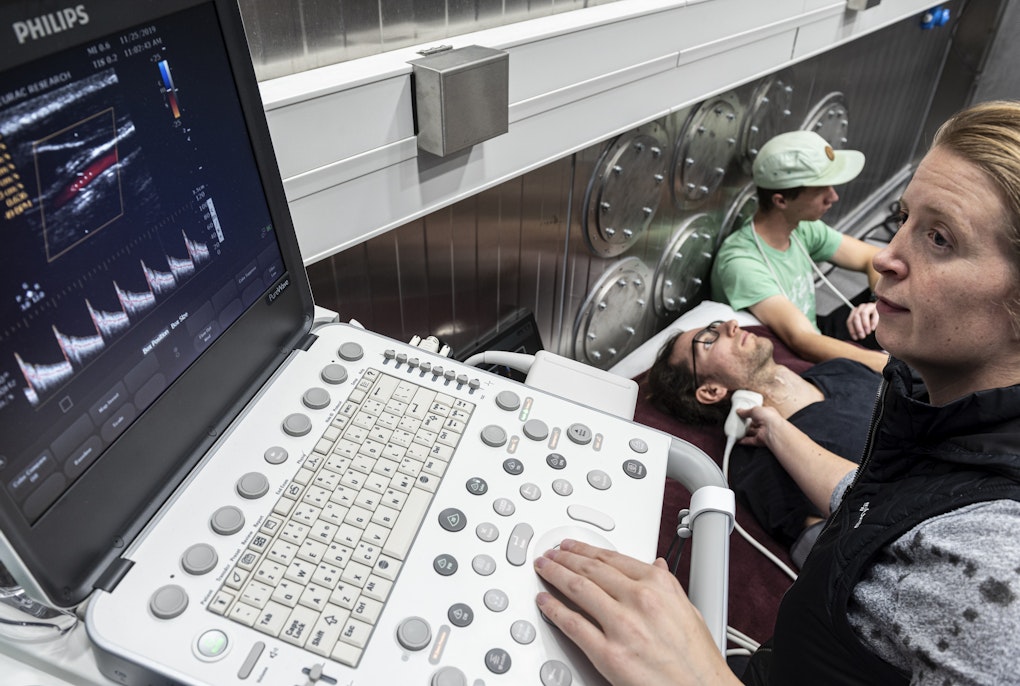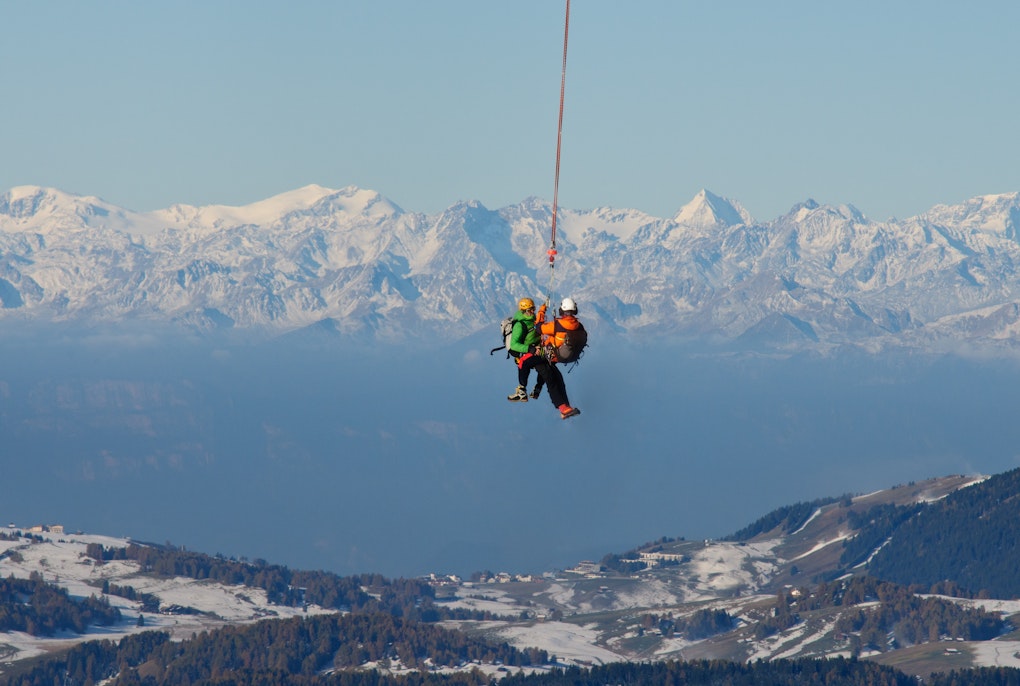magazine_ Interview
"Every accident in the mountains is an emergency."
Hermann Brugger talks about what is probably the most comprehensive standard work on rescue operations in the mountains.
Hermann Brugger, head of the Institute for Alpine Emergency Medicine, is the editor of what is probably the most comprehensive reference work on rescue operations in the mountains. On its 700 pages, 80 authors have summarised the current state of the art in this field, from accidents caused by lightning strikes and the rescue of avalanche victims to altitude-induced psychosis.
Mr. Brugger, in the photo with the book you look satisfied, but also a little tired? Was the road to the completing "Mountain Emergency Medicine" a winding one?
Brugger: (laughs) We - and that means 80 authors, anesthesiologists, emergency and intensive care physicians, from all over the world - have indeed worked for a very long time on the standard work "Mountain Emergency Medicine". A total of four years. In 48 chapters on 700 pages, we cover all topics of emergency medicine in difficult-to-access mountain terrain, from a wide variety of perspectives - from terrestrial rescue to helicopter rescue to very special clinical pictures taken at high altitudes of conditions such as frostbite, high-altitude pulmonary edema, etc., as well as initial on-site treatments. However, I also unwrapped the book late in the evening. The joy was so enormous I had to capture the moment photographically and send the photo to everyone involved. Normally, we would have celebrated this moment big time at our Institute for Alpine Emergency Medicine.
Four authors from your institute co-wrote the reference book of which you were the editor together with other great names from emergency medicine such as Ken Zafren, Luigi Festi and Peter Paal. Giacomo Strapazzon, your institute colleague and fellow co-editor, has called the work a milestone for alpine emergency medicine.
Brugger: He’s not wrong. There’s never been a compendium like it before. The first edition of Tintinalli's standard work on emergency medicine appeared in 1974. Today it is still - and we are now on edition number 9 - the reference work for aspiring emergency physicians. Alpine emergency medicine has not been around that long and so far, our institute is the only one with a clear research mission in this field. The first studies came out in the 1990s and over the past 15 years there has been an explosion of literature. In recent years, we’ve contributed to making this field scientifically known. From this point of view, it was logical for us to take on the publication of this work.
The Institute of Mountain Emergency Medicine is the only one with a clear research mission in this field.
What distinguishes alpine emergency medicine from conventional medicine?
Brugger: If I had to describe it in its simplest terms: the extreme location. Alpine emergency medicine is what happens far beyond the hospital and in rough terrain, where no ambulance can go. In the hospital, injured people initially receive care in the emergency room where doctors are in a safe environment, know every move, all protocol and have access to all the equipment and expertise they could possibly need. In extreme terrain, different laws apply where terrestrial rescue and first aid are associated with an enormous effort in terms of material and human resources. And then it is dangerous for everyone involved - not just the injured. This is due to the terrain, the altitude, the extreme climate. Every accident in the mountains is an emergency, even if it is a minor injury. In our book, we address all these aspects and provide a little more clarity for extremes.
Alpine emergency medicine is what happens far beyond the hospital and in rough terrain, where no ambulance can go.
Hermann Brugger
What about medical care? Are there any very special injuries or illnesses in alpine emergency medicine?
Brugger: Depending on the season, altitude and activity; frostbite, fractures, bruises, contusions, open wounds, internal bleeding... In the book, we categorise injuries according to the cause of accident, such as avalanche, crevasse, climbing, canyoning... all the way to aviation accidents and lightning strikes. To each accident we dedicate one or more chapters, and cover all the topics, from the rescue operation, equipment, initial diagnosis and care on site, to transport to the hospital. And, of course, we devote intensive attention to typical clinical pictures of high mountain related ailments: acute altitude sickness, high-altitude pulmonary edema and high-altitude cerebral edema.
Your research group has already made headlines in emergency medical research in the past, for example with the new guideline for resuscitating severely hypothermic accident victims.
Brugger: Together with colleagues from Europe, Canada and the U.S., we determined a new guideline for body temperature and the concentration of potassium in blood serum. If a casualty is severely hypothermic and no longer shows any cardiovascular function, certain findings during rescue can already give an indication as to whether resuscitation in the hospital could be successful. This is done by rewarming the subject with an extracorporeal circulation pump, which can only happen in larger hospitals and is very costly. Such devices have recently been installed in the hospital of Bolzano/Bozen.
The Alps have the best helicopter fleet in the world for mountain rescue and the best equipped and trained mountain rescue services.
Hermann Brugger
Have these new findings also been incorporated in the reference book?
Brugger: Of course. And so has a completely new clinical finding that we came across: isolated altitude-induced psychosis. Until now, it was thought that hallucinations at extreme altitude were due to acute altitude sickness and occurred together with cerebral altitude edema. We now know that psychotic episodes in which extreme mountaineers see and hear people and things that do not exist, represent an entirely separate clinical picture. At extreme altitude, this isolated psychosis has cost the life of many a climber. Aspiring alpine emergency doctors, paramedics and mountain rescuers can now read all this information in the anthology.
Your book is published in English, although only a handful of the authors are native English speakers.
Brugger: That's probably another reason why it took a little longer... (laughs). Alpine emergency medicine started in Europe in the 1990s. The Alps have the best helicopter fleet in the world for mountain rescue and the best equipped and trained mountain rescue services. In Europe, an accident victim is usually treated by an emergency physician. In the USA, for example, paramedics provide first aid on site. The book contains highly specialised knowledge that we have systematically built up here in the Alps since the 1990s. Now we want to share this knowledge with other mountain regions around the world whose rescue services are still being developed. regionen zukommen lassen, deren Rettungsdienste noch im Aufbau begriffen sind.
Hermann Brugger
- 2009-present: Director of the Institute of Mountain Emergency Medicine, Eurac Research
- 2006: post-doctoral qualification in emergency medicine, Medical University of Innsbruck
- 2006-present: private lecturer and associate professor, Medical University of Innsbruck
- 1983-2018: General practitioner (Bruneck), emergency physician and mountain rescue physician
- 2016-present: President of the International Society of Mountain Medicine ISMM
- 2001-2009: President of the International Commission for Mountain Emergency Medicine ICAR MEDCOM
Access the complete list of his scientific publications here.
About the book
Mountain Emergency Medicine
Brugger H., Zafren K., Festi L., Paal P., Strapazzon G.
February 2021
Pages: 672
ISBN: 9788821447334
The publication can be ordered here: https://www.edizioniedra.it/Mountain_Emergency_Medicine.aspx
Presentation of the book
